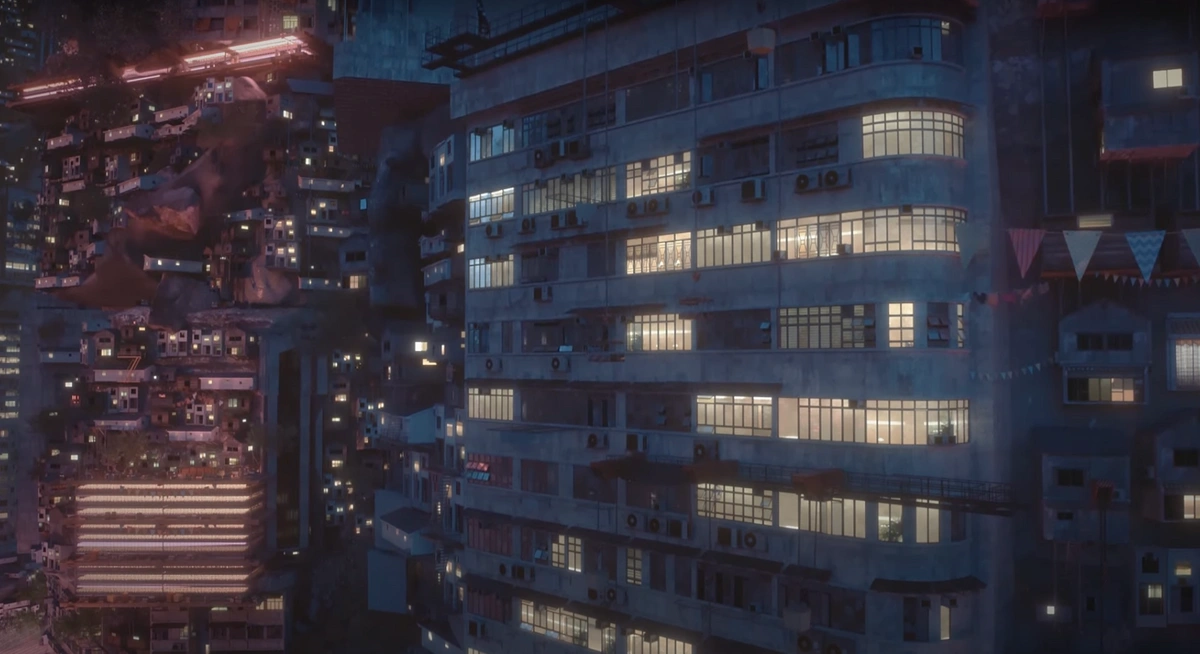Comparing Planet City to Project NEOM - the city that should never happen
Huckletree's Editorial TeamThe Editorial TeamHuckletree9/22/2022
“Planet City radically reverses our endless sprawl. Across generations, we retreat into one hyper-dense metropolis housing the entire population of Earth”
Dubbed a “sci-fi safari” by TED Talk, Liam Young's Planet City is an imaginary city that houses the entire globe's population in a speculative, highly innovative urban space, allowing the rest of the world to rewild. An intention to give back to lands once colonised and destroyed by human presence.
Planet City provides a visual on the advancement of technology and how it could shape our cities. Within the metropolis, Young designs in 121,307 km² of hydroelectric canals, 2,357 algae farms and 26,975,567 autonomous tractors. The way he presents this speculative vision, from swaying Trojan horses and stacks of concrete sprawls to millions of lit-up windows and mass falling from the sky, has a dystopian eeriness to it.
Planet City provokes us to consider the huge impact our actions have on our fragile environment and what tomorrow will become if we persist in ignoring the warning signs. When viewing or contemplating the ideas presented within Young's Planet City, you're confronted with imagining what we really want our future to be. Is it Planet City? Though a spectacular vision, do we really want it to get that far? Probably not.
When looking at the plans for Saudi Arabia’s Project NEOM, it's difficult to shake Planet City from your mind. A self-proclaimed “revolution in civilisation”, project NEOM will span 170,000m. A tunnel of a city cutting through the desert with 500m high mirrored walls. Comparable to Planet City in that the project, designed to house 9 million people, is an extreme approach to creating a metropolis that can cope with the extremes.

We wouldn't be the first to compare NEOM to projects that shouldn't have been actualised. Edwin Heathcote very recently wrote in the Financial Times comparing the project to a satirical design made by Italian architects in the 60s. Northcote writes, "it was architectural satire on modernism's lack of a relationship with context”. NEOM not only demonstrates a lack of context but a complete disregard for it. The project will strip indigenous people of their homes, before even considering who this city is for - which 9 million people are going to flock to live in an isolated city in the middle of a desert? It claims to be an environmental solution yet will generate an enormous carbon footprint in its development and will then rely on Saudi oil.
The future isn't in building more grandiose projects. The future is in being resourceful. It's in taking stock of our existing cities and getting creative with the myriad ways we can repurpose, redevelop, and reuse. The future is in being human-centric. Who are we developing cities for? Before we look to actualising the extreme and provocative projects (and we should take a moment to consider whether we should even get to that place), we need to solve the challenges that already exist in the urban spaces we live in today.
Earthrise Summit 2022 will cover this pertinent, complex debate and so much more. Join Liam Young alongside a line-up of 50 speakers from across the globe, including well-renowned architects Jan Gehl and David Chipperfield, to discuss how to drive action towards a more sustainable, more equitable urban future.
Huckletree's Editorial Team
Curiosity may have killed the cat, but it sure can’t touch the Huckletree Editorial Team. If there’s an angle, they’ll find it. A stone unturned? They’ll turn it. This gang of wordsmiths and renegades know how to spin a story. Hear from them the insights of the startup ecosystem.
info@huckletree.com